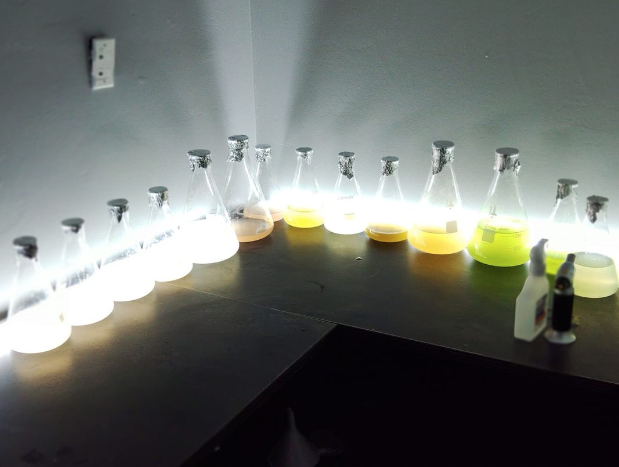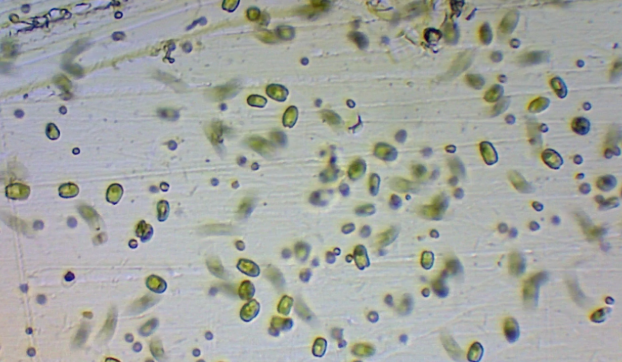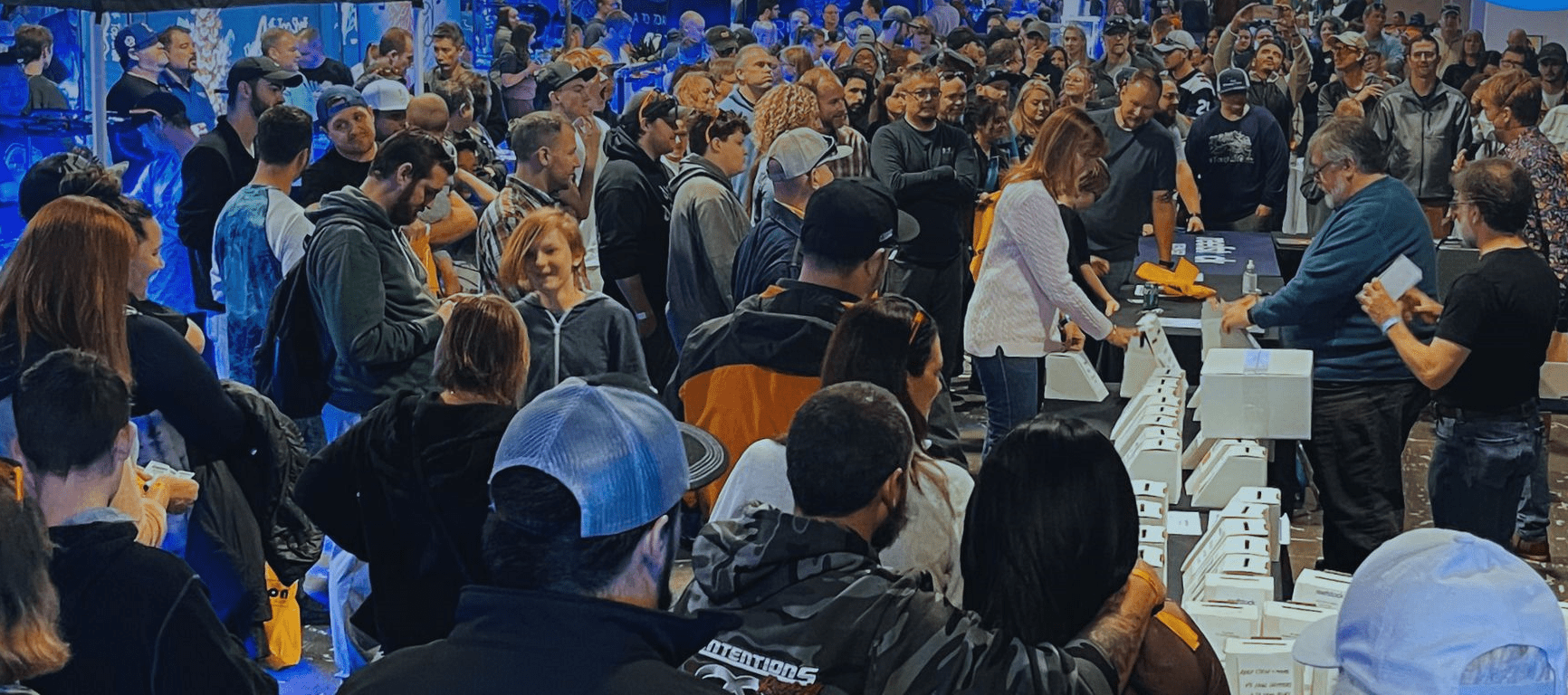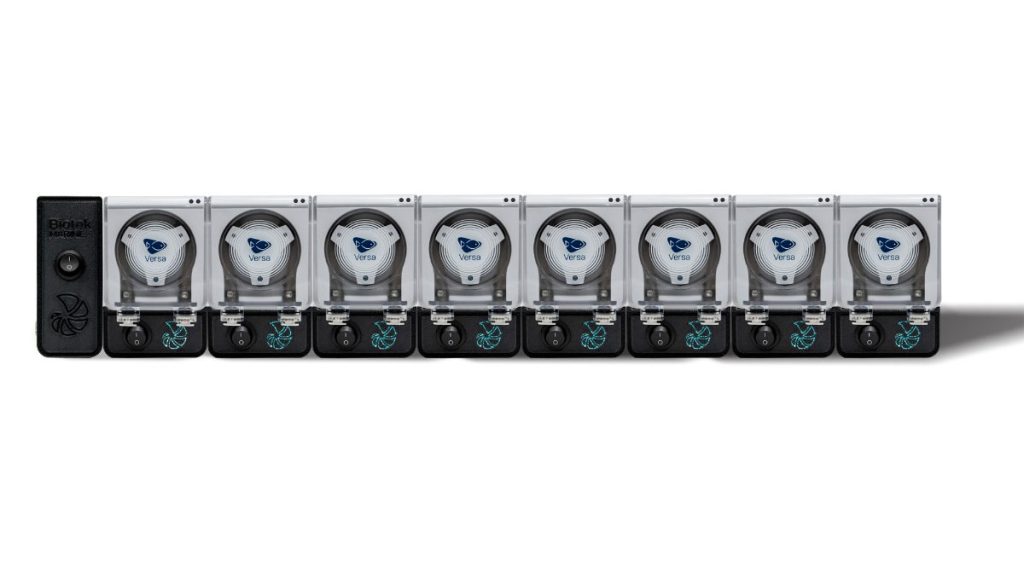Time for more questions and answers from the mean, green phytoplankton-making machine, Taras Pleskun.
Do I need to refrigerate phyto?
I would highly suggest refrigerating any live phytoplankton cells that you do not intend on feeding to the aquarium that day. There are two main reasons for this. Firstly, the warmer live algae cells are, the faster their metabolism will be. This means that they will grow and consume resources quicker. A concentrated bottle of live phytoplankton has no space to accommodate more growth, meaning cells will begin to consume their stored resources. This is when the nutritional content of the algae becomes depreciated as the consumed resources are the pigments, lipids, and sterols intended for our reef.
This process is also stressful, weakening the phytoplankton population. Eventually, cells starved of resources will die and sink to the bottom of the bottle. These dead cells smother fallen live cells and facilitate the growth of opportunistic bacteria. Likewise, these bacteria grow much quicker at warmer temperatures than cold. This is why refrigeration is paramount to short-term live algae cell storage. Cooler temperatures not only preserve the nutritional quality of the algae…but keep it alive.
How to refrigerate phytoplankton
Most consumer refrigerators are fitted with a mechanism that shuts the refrigerator light off once the door is closed. If at all possible, I highly recommend disabling this mechanism when using a fridge for live phytoplankton storage. Microalgae species such as Tetraselmis and Rhodomonas have the ability to thrive at cooler temperatures and will choose to grow as a benthic community if cooled down, unaerated, and exposed to just enough illumination. This is why phyto bottles left in the fridge overnight will appear clear in the morning with a thick layer of ‘color’ at the bottom. Once shaken, the bottle will return to its original, if not darker color.

Should I take the top off phytoplankton and store it in the light to keep it alive?
There is an art and science to storing living algae biomass. Aeration of any kind appears to be problematic and promotes bacterial growth/foam formation. There is another series of arguments referring to the ‘right light for the right species’. For example, I have found that illuminating refrigerated bottles of Rhodomonas and Tetraselmis greatly prolong the shelf life of the product. What do I mean by this specifically?
Most refrigerators come with either a 4100K (yellowish) or 6500K(blueish) white light. Tetraselmis will actively grow at these spectrums, even at refrigerator temperatures. This makes refrigerated Tetraselmis bottles highly viable for inoculating larger cultures. Rhodomonas also grows slowly at refrigerator temperatures..but more importantly, I have found that far less pigment attenuation (transition from red to pink to brownish) occurs when a refrigerated Rhodomonas culture is illuminated under 30-50µE m-2 s-1 (PAR) of 6500K light.
Counterintuitively the same does not appear to be the same for Tisochrysis, where discernable ‘fading’ of a culture occurs when it receives more than 50µE m-2 s-1 under refrigerated bottle conditions. Therefore, it may be more favorable to store this species in the back or slightly covered when refrigerated…Of course, another trick is realizing that most refrigerators have an auto-shut-off mechanism when the door closes…disabling this is a simple way to convert your refrigerator into an algae bank!
How do I know if phytoplankton is alive or dead?
Having live, uncontaminated cells is key to evaluating the quality of any phytoplankton product. This can be achieved through various means. Live cultures should be the correct color with no obvious signs of calamity (ie. bottle is clear, spotted with other colors, full of rotifers, etc.). Concentrated phytoplankton cultures have their own distinct aromas…much like flowers… In my humble opinion, Tisochrysis smells a little like the umami taste of crab or lobster. Rhodomonas has an earthier version of this umami sentiment. Tetraselmis is a mixture of fresh-cut grass and the beach.
I’m not sure if many agree with my aromatic tastes, but it is widely agreed that live phytoplankton does not smell like rotten eggs or abject decomposition. The most common cause of DOA for live phytoplankton is overheating, often due to a shipping delay. When this occurs, best to contact the vendor soon upon arrival, as cooked phytoplankton cells are too latent with bacteria to be of beneficial use.

However, there are more sensitive ways to evaluate phytoplankton livelihood and contamination. I highly recommend that all seasoned reef aquarists purchase a cheap, but practical, microscope for being able to visualize the microbial aspects of their aquariums. A compound microscope will allow for clear observation of microalgae cells. Some species, such as Tetraselmis, are larger and far more mobile than species like T-ISO. But overall, microalgae cells should be moving somewhat, even if it looks like just vibrations.
While looking at these cells under the microscope, one should look for obvious grazing contaminants like copepods, ciliates, and/or rotifers. Bacteria will not be obvious under the magnification capacities of normal microscopes…which is fine as no commercial algae are absent of bacteria. Various bacteria act as regular symbiotes to microalgae and having them ‘along for the ride’ is a lot of what a healthy phytoplankton cell is about.
The key is evaluating if the bacteria coming along are friend or foe. This is where an incredible world of mystery and discovery awaits the reef aquarium industry, which now possesses growing access to tools such as electron microscopy, agar plating, and PCR analysis. These tools will allow for a much more intimate understanding of microalgae condition and behavior. But for the average reef aquarist, I would say that rough observation mixed with maybe a quick look under the microscope is the best way to evaluate if your purchased microalgae cells are alive and uncontaminated.

Learn more from Taras in his Phytoplankton FAQ series below:



